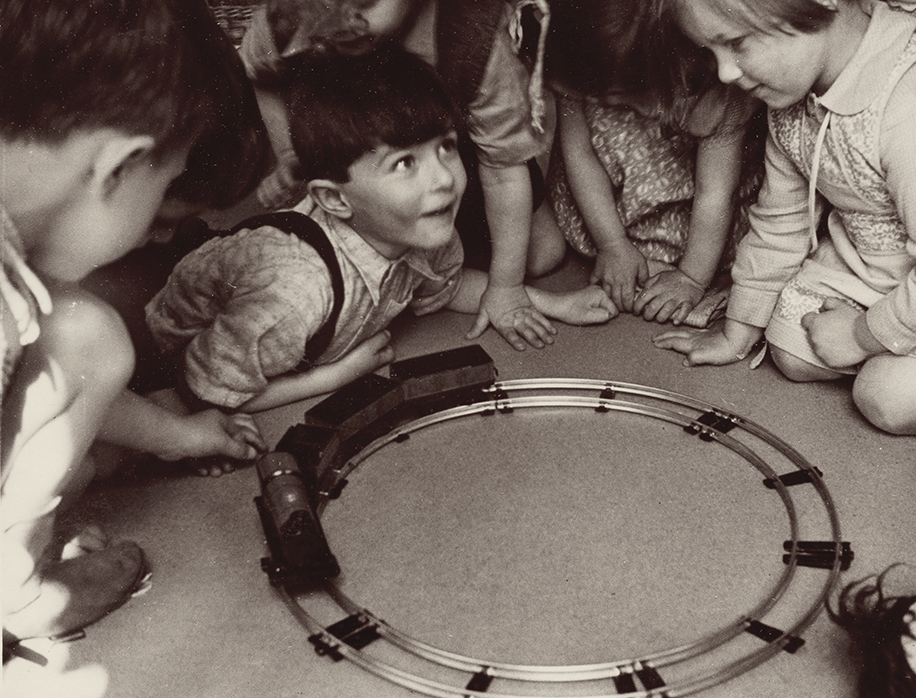Play is at the core of development, of creativity, and mental health.

Children at the Hampstead Nurseries, 1940. © Freud Museum London
We all play. We all need play. But how do we define play? It’s a developmental process, a source of fun, a way of working out anxieties, of creating something new, of building relationships. We all need play. It helps to define and develop who we are and what we can do. In the words of David Hockney: ‘People tend to forget that play is serious’.
Exploring play and its many meanings in psychoanalysis, this exhibition looked at play in the work of Sigmund and Anna Freud, Melanie Klein and Donald W. Winnicott, and how approaches to play, within and outside of the clinic, have developed since Sigmund Freud’s lifetime. Was play controversial and why? How was it used in clinical sessions? Why do we all need to play?
Using storytelling, art works, oral histories and interactive games, the exhibition explored play and its many meanings in psychoanalysis. It also aimed to entice people of all ages to play at the Freud Museum, with an open invitation to come and play.
The exhibition included material made by children in workshops at children’s charity UP: Unlocking Potential, a centre for vulnerable children. They used soft materials to make models of teddies and superheroes, hands and animals, sitting alongside artworks by adult artists. Games and interviews with key figures in the field (as well as people who just like to play) were available on audio visual devices that punctuating the exhibition.
Children’s activity packs and tours took place throughout the school holidays, along with games to play inside the museum and in the garden. Children’s workshops (free with adult ticket), as well as evening events for adults also encouraged all to explore and play.
‘It is only in playing that the individual child or adult is able to be creative and to use the whole personality, and it is only in being creative that the individual discovers the self.’ — Donald W. Winnicott